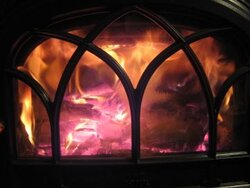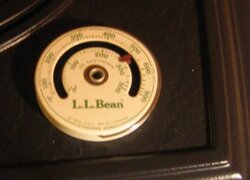- Nov 12, 2006
- 66
Hi everyone! I have a Jotul Oslo. Before the winter season I will be installing all new class A chimney pipe. How tall should I go with the chimney? My ceiling (flat) is 9'2" and I have two 45 degree elbows on the run of single wall pipe. I planned on a total of 9 feet of chimney pipe. About 3 feet is in the attic space so 6 feet would be outside. I plan on using Metalbestos materials. Do I need to go any higher?
Note: I already properly clear any nearby structures/roofs with the proposed height.
Thanks!
Note: I already properly clear any nearby structures/roofs with the proposed height.
Thanks!


 !
!
